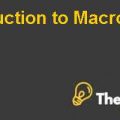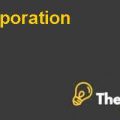Colorscope Inc.
Introduction
Andrew Cha, who is a specialist in graphics designing, started his own company after years of hard work and through experience gained by working with different companies; he established the firm with the name of Colorscope in 1976. Colorscope has different portfolio of customer ranging from impulse customers to long-term loyal customers, the amount of loyal customers comprise 80% of the total customers of the company.
The operational process at Colorscope started from receiving orders of customers; these orders were mostly related to magazines and some other sort art and graphics work. All the specifications and design requirements were recorded on phone calls and then the person who was entitled to record the task did the preparation; this involved the creation of templates by physically cutting and pasting text, graphics and photographs, and special effects were also included at an additional cost. Then in the next step of the production process, template pictures were digitalized and scanned. Further the task was sent to the assembly division where operator changed the color and shade of scanned images as per the specifications of the customer. Then the task was finally sent for quality control to the Quality Control (QC) Department and if the task was not as per the specifications of the customer; it was sent back to that specific process for reworking which meant that all the following processes had to be repeated for that specific task. Once passed from the QC Department; the task was completed.
Problem Statement
Colorscope is facing difficulties in retaining its customers partly because of the quality of their work and due to the prices charged to customers along with the absence of some sort of internal controls.
Analysis
Work Flow at Colorscope:
The work flow started at Colorscope from receiving orders on phone calls and then recording the specifications that might cause some data to be misinterpreted or erroneously recorded which caused reworking on the task, so that it was fully completed and returned to the QC Department. Since the receiving and recording of the task was the first stage of work; hence if there was any mistake at this stage then the entire process had to be repeated in order to rework the task. In the next stage of the process, templates of picture were created by physically cutting and pasting the graphs, images and text.
The scanning process was done using three laser scanners and the task was sent to the assembly department once the scanning process was completed. The assembly was done using the old fashioned and obsolete technology, which resulted in inferior quality of output and increased cost. New technology should be brought in to remain competitive in the printing industry and monitoring of work should be carried out to suggest the improvements needed.
Pricing Strategy:
Costs of work done at each process of the given task has to be analyzed and costing system such as activity based cost should be used while allocating the overhead cost such as rent cost to each process. Activity/capacity responsible for incurring the cost (cost driver) should be used to allocate the cost between each process. Since rent expenses directly relates to floor space hence; it would be reasonable to allocate rent on the basis of floor area occupied by each department.
Cost per task needs to be calculated as per Appendix-A based on activity based costing, and loss-making tasks should be evaluated further. In this evaluation, cost incurred as a result of in-house error and cost associated with idle time and space should not be considered as these are abnormal losses. New technology should be brought in to minimize the depreciation cost due to the use of old equipments.
This is noted as part of the job costing process that almost all the loss-making tasks have been reworked either due to changes in customer specifications or in-house errors; this should be evaluated that what is the policy of additional charges on rework requested by customer and the customer should be told in advance that later changes in work will require additional cost to be paid. Frequency of reworking tasks should be minimized. As per the Appendix-B, 8% of the jobs were reworked during June 1996 regarding the task preparation process and 15% in respect to rest of the three processes.
Accounting and Control System:
Activity based costing can be used as an accounting system for arriving at the base price of each task done by justifying the work against cost consumed by each process. So that each process is evaluated against its performance and cost consumed.
Control system should be in place for proper and smooth operations at all the stages of production processes. The work flow at the Colorscope is well standardized but it is not documented. It should be documented and communicated at all levels of production processes hence; there is no point in deviating from the standard procedures. Customer specifications should also be sent to each production process so that it is matched with the work completed at each step that will again help in minimizing the chances of rework.
Since all the staff is cross-trained and can perform the activities of the entire process involved without the need of any additional training hence; at every stage the task should go through a quality control process before it is forwarded to the next level, this will help in minimizing the chances of rework suggested by the quality control division at the final stage.
As part of the internal control system, supervisory controls should be introduced at all stages of processes in order to assess the performance of each individual and processes involved in the completion of a task, and based on that supervision corrective actions should be implemented.
Conclusion:
Based on above analysis, operations of Colorscope should be documented and well communicated regarding all the processes, and customer specifications should also be communicated to staff at all stages in writing so that reworking of tasks can be avoided. In addition, new technology should be brought in to enhance the quality of output and to minimize....................
This is just a sample partial case solution. Please place the order on the website to order your own originally done case solution.
Small company in the graphic arts business faces stiff competition in prices. The company should be responsible for reducing costs and improving the process of adoption. "Hide
on VG Narayanan, Joseph Cha Source: Harvard Business School 16 pages. Publication Date: December 9, 1996. Prod. #: 197040-PDF-ENG












